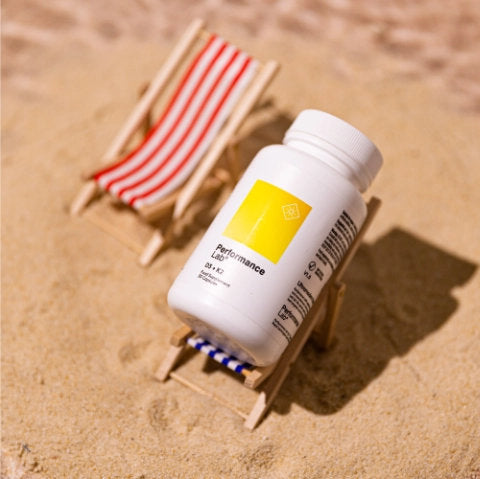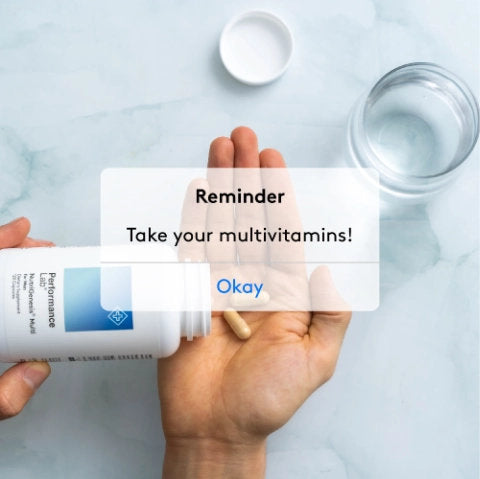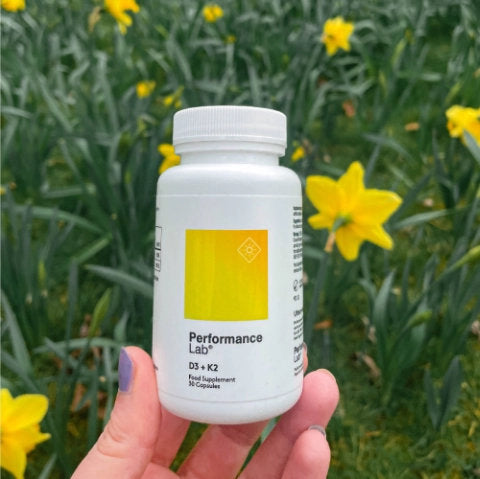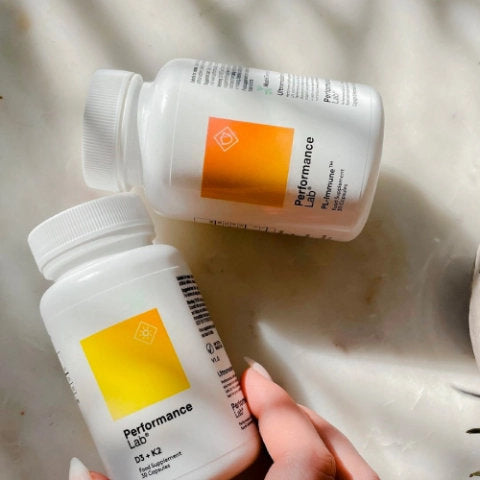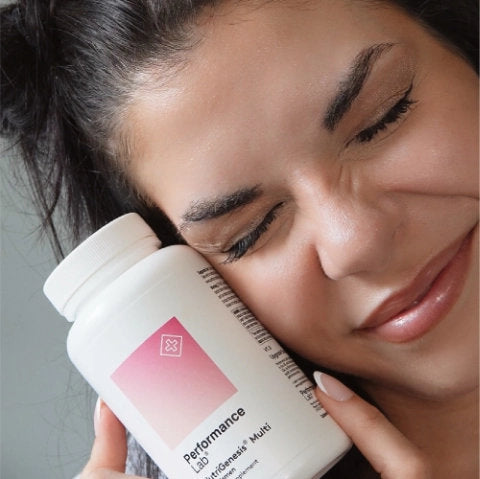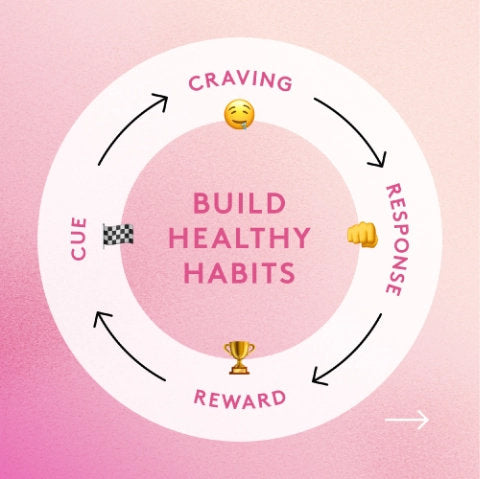Nitric oxide (NO) is a compound naturally produced in the body that plays a crucial role in many physiological processes. If you’re dealing with a nitric oxide deficiency or impaired nitric oxide production, watch out for symptoms like high blood pressure, vision changes, depression, and impaired memory.
Whether you’re looking for better workout performance or a healthier heart, nitric oxide is something you want to know about.
It’s a small, highly volatile compound involved in everything from mood and cognition to immune function and cardiovascular health. But just because the body can produce NO via blood vessels, that doesn’t mean it has enough.
If you’re struggling with symptoms and can’t figure out the cause, it might be time to look at your nitric oxide levels.
Keep reading to learn about the most common nitric oxide deficiency symptoms and the easiest ways to get your levels back up (hint: they’re called nitric oxide boosters!).
What Is Nitric Oxide?
Before diving into the health benefits, we must know exactly what nitric oxide is. Sometimes referred to NO, nitric oxide is a colorless and odorless gas and free radical composed of one molecule of nitrogen and one molecule of oxygen.
Virtually all cells in the human body produce nitric oxide. It is synthesized enzymatically from the amino acids L-arginine and L-citrulline via the enzyme nitric oxide synthase pathway 1.
NO is an essential molecule in the endothelium-dependent regulation of blood flow and blood pressure and is recognized as a neurotransmitter in specific types of nerves 1. But it also has many effects at the molecular level that gives it a diverse range of physiological actions that support health and performance.
But why should we care about it?
Aside from its plethora of roles, nitric oxide is a key mediator of cell-to-cell communication and is essential for inflammation, vasodilation and blood flow regulation, cardiovascular disease risk, and neurotransmission, among others.
So, it’s safe to say that nitric oxide is pretty important.
What Causes A Nitric Oxide Deficiency?
Although nitric oxide is naturally produced in the body from the amino acid L-arginine via enzymes called nitric oxide synthases, levels are maintained throughout the lifespan.
Although the exact cause is difficult to pinpoint, decreasing levels of nitric oxide that come along with aging may be due to a reduced capacity to produce the gas via the L-arginine pathway or a deficiency of the amino acid 2.
And this age-related decline in nitric oxide production, bioavailability, and signaling may contribute to many chronic diseases, including cardiovascular disease.
Insufficient nitric oxide production is a big deal. It can result in endothelium dysfunction, which contributes to cardiovascular diseases like atherosclerosis, high blood pressure, and other cardiovascular risk factors.
It’s also an essential mediator of neurodegeneration in several chronic diseases of the central nervous system, including Parkinson’s disease, Alzheimer’s disease, amyotrophic lateral sclerosis (ALS), Huntington’s disease, and ischemic brain injury (stroke) 3.
This makes it easy to see why nitric oxide deficiency can be problematic. But even for young people, low levels can still be a problem. For example, there are links between nitric oxide and athletic performance; low levels could impair your progress and results in the gym.
But here’s the thing—exercise maintains the health of your endothelial cells and blood vessels by supporting your body’s natural ability to produce nitric oxide.
So, the more you exercise, the more your body can make, especially if you’re supplying the precursors for its production.
But low levels aren’t just the result of aging. They can also be caused by:
- Low-nitrate diet
- Smoking
- Lack of exercise
- Antacid and proton-pump inhibitor use (inhibit nitric oxide synthesis)
- Changes to the oral microbiome (destroy beneficial bacteria needed for NO synthesis)
Of those causes, the oral microbiome link is probably one most people aren’t familiar with.
Recent research suggests that bacteria in the oral microbiome reduce inorganic nitrate to nitrite and nitric oxide, contributing to normal nitric oxide levels in the body 4.
However, frequent tongue cleaning and using “bacteria killers” like mouthwash can alter the microbiome and interfere with production.
Nitric Oxide Deficiency Symptoms
Ever wondered if you’re low in nitric oxide? Here are some of the most common symptoms:
- Erectile dysfunction: For men, nitric oxide is the primary agent responsible for relaxing the smooth muscle in the penis and allowing it to fill with blood to maintain an erection 5. If nitric oxide levels are insufficient, smooth muscle doesn’t relax, and an erection cannot happen to the same degree. The result? Sexual dysfunction.
- High blood pressure: It’s suggested that people with high blood pressure have an impaired ability to use nitric oxide. Because nitric oxide is a potent vasodilator, it can help to regulate blood pressure levels in blood vessels and reduce blood pressure 6, 7. But if levels are insufficient, blood pressure can remain high. As such, increasing nitric oxide levels increases blood flow and lowers blood pressure.
- Atherosclerosis: Atherosclerosis is a chronic inflammatory condition whereby plaques develop on the interior walls of blood vessels, which leads to reduced blood flow 8. It is a significant risk factor in several cardiovascular diseases, but studies suggest that endothelial dysfunction from NO or another source could be an early event in the development and progression of atherosclerosis. Studies indicate nitric oxide is required to prevent vascular calcification 9.
- Depression: Nitric oxide deficiency may also increase the risk of depression and various other disorders, thanks to its role in modulating the body’s neurotransmitter system(s). Research shows that nitric oxide modulates key neurotransmitters involved in the pathogenesis of major depression, including norepinephrine, serotonin, dopamine, and glutamate 10.
- Poor vision: Nitric oxide is also a powerful mediator of various homeostatic processes in the eye, including regulating aqueous humor dynamics, retinal neurotransmission, and phototransduction 11. Impaired production of nitric oxide and low levels could contribute to inflammatory diseases like uveitis and retinitis or degenerative diseases like glaucoma and retinal degeneration.
- Impaired memory: Nitric oxide has received much attention due to its role as an essential neurotransmitter in the brain. It’s been shown to induce cognitive behavior in animal studies and is involved in neural circuits that contribute to learning and memory 12. Defective nitric oxide activity in the brain can lead to cognitive impairment and impaired memory, which can eventually lead to pathological conditions such as epilepsy, stress, and diabetes 13.
How To Naturally Increase Levels Of Nitric Oxide
If you want to naturally increase nitric oxide levels to maximize your physical and mental performance and maintain a healthy circulatory system, here’s how you can do it.
Nitric oxide foods

It’s easy to increase nitric oxide through diet naturally, but you have to know which foods to eat! That said, you won’t find foods specifically containing nitric oxide.
Instead, these foods contain nitrates, converted to nitrites and nitric oxide in the body. And about 80% of dietary nitrates are from vegetables, with red beets being the most concentrated source of dietary nitrates.
Here are some other great choices:
- Dark leafy greens, especially arugula
- Endive
- Leeks
- Broccoli
- Fennel
- Radishes
- Celery
- Turnips
- Cucumber
- Carrots
- Cauliflower
- Dill
- Parsley
- Pomegranate juice
- Oranges
- Bananas
But since L-arginine is the precursor for nitric oxide production, you can also load up on high-protein foods rich in arginine, like grass-fed beef; wild-caught fish, seafood, and eggs dairy (yogurt, kefir, raw cheeses), pumpkin seeds, sunflower seeds, and spirulina.
Nitric oxide dietary supplements
The other option you have to boost nitric oxide levels is through supplements.
As with food, you won’t find supplements containing nitric oxide itself, but you will find three major NO-precursors in them:
- Red beetroot
- L-citrulline
- L-arginine
Red beetroot and citrulline show the most promising effects on increasing nitric oxide levels. And there’s only one place to find them: Pre Lab Pro®.

It’s a powerful pre-workout formula that leverages the effects of red beetroot powder for a 25x concentration extract that unleashes a nitric oxide rush to supercharge your workout performance.
With Pre Lab Pro®, you’re getting:
- Improved neuromuscular performance
- Extended fatigue resistance
- Enhanced muscle energy
- Healthy cardiovascular function
- Sharper cognitive function
- Increased blood flow
- Lower blood pressure
It’s maximum workout performance without the side effects of conventional pre-workout formulas - and it’s a superstar to avoid a nitric oxide deficiency.
- Bredt DS. Endogenous nitric oxide synthesis: biological functions and pathophysiology. Free Radic Res. 1999;31(6):577-596.
- Reckelhoff JF, Kellum JA, Blanchard EJ, Bacon EE, Wesley AJ, Kruckeberg WC. Changes in nitric oxide precursor, L-arginine, and metabolites, nitrate, and nitrite, with aging. Life Sci. 1994;55(24):1895-1902.
- Knott AB, Bossy-Wetzel E. Nitric oxide in health and disease of the nervous system. Antioxid Redox Signal. 2009;11(3):541-554.
- Bryan NS, Tribble G, Angelov N. Oral Microbiome and Nitric Oxide: the Missing Link in the Management of Blood Pressure. Curr Hypertens Rep. 2017;19(4):33.
- Toda N, Ayajiki K, Okamura T. Nitric oxide and penile erectile function. Pharmacol Ther. 2005;106(2):233-266.
- Hermann M, Flammer A, Lüscher TF. Nitric oxide in hypertension. J Clin Hypertens (Greenwich). 2006;8(12 Suppl 4):17-29.
- Walsh T, Donnelly T, Lyons D. Impaired endothelial nitric oxide bioavailability: a common link between aging, hypertension, and atherogenesis?. J Am Geriatr Soc. 2009;57(1):140-145.
- Matthys KE, Bult H. Nitric oxide function in atherosclerosis. Mediators Inflamm. 1997;6(1):3-21.
- Kanno Y, Into T, Lowenstein CJ, Matsushita K. Nitric oxide regulates vascular calcification by interfering with TGF- signalling. Cardiovasc Res. 2008;77(1):221-230.
- Dhir A, Kulkarni SK. Nitric oxide and major depression. Nitric Oxide. 2011;24(3):125-131.
- Becquet F, Courtois Y, Goureau O. Nitric oxide in the eye: multifaceted roles and diverse outcomes. Surv Ophthalmol. 1997;42(1):71-82.
- Susswein AJ, Katzoff A, Miller N, Hurwitz I. Nitric oxide and memory. 2004;10(2):153-162.
- Paul V, Ekambaram P. Involvement of nitric oxide in learning & memory processes. Indian J Med Res. 2011;133(5):471-478.




